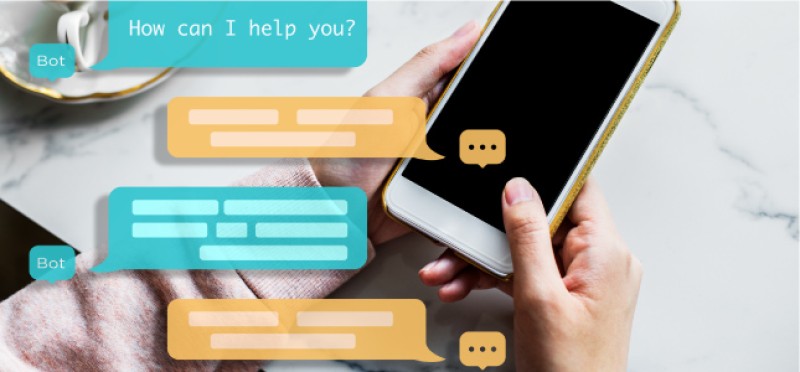Artificial intelligence is expanding across the customer experience world. Brands are looking for ways to cut costs while minimizing negative impact on customers. And one of the most significant areas of opportunity to cut costs through automation is to deflect calls with a customer service chatbot.
With advancements in AI technology, the number of chatbot providers, demos like Google's Duplex making a dinner reservation, and CEO discussions at Davos about automation, AI for customer interactions in the contact center will only increase in volume and sophistication.
However, in this race, many brands are moving too fast and are looking for the impact ahead of getting their data, infrastructure, and strategy in place. This often results in the opposite effect and causes poor experiences. Forrester found that 54 percent of U.S. online consumers expected interactions with customer service chatbots to harm their quality of life. On top of that, about half of chatbots put in place today will have been abandoned by 2020, according to Gartner.
Too many brands try to get to the end state and skip the journey necessary to get there successfully. Imagine trying to fly to the summit of Mt. Everest—there isn't a way to do it effectively or safely. You have to plan, climb, and do the work. Sure, you can jump-start parts by flying to base camp, but you still need to acclimatize at the various camps and do the work of getting to the summit. It is the same with automation; you need to optimize your knowledge system, correctly set up your technology, and train your AI internally so that it is ready to go when it is finally customer facing.
Bots are not a static technology, either. They need to “learn.” A good bot is continually being refined, so it’s important to expect it not to work perfectly for a while, if ever. The more they are used, the better results they produce. So, the user ends up being a live “tester.” And with most bot discussions focused on customer-facing tasks, it’s customers who unwittingly help train bots when they interact with automated services. As expected, some interactions may not run smoothly, which can damage customer relationships and deter customers from using bots.
Why would you put your most valuable assets—customers—through the pain of bot training and optimization? They should be the recipients of the refined bot, not guinea pigs as bots get trained. Instead, leverage the valuable resources already at your disposal: your employees.
3 ways to optimize AI from the inside out
Instead of focusing on the end customer interaction only, starting in reverse order is the best path to success and maximizing the impact automation can have in your contact center.
1. Get your knowledge in order. Begin by optimizing your knowledge as a comprehensive and cohesive set of information that will help employees serve customers quickly and effectively. Update or eliminate outdated files, ensure you have a single source of truth vs. many disparate knowledgebases, make sure information is tagged correctly, and be sure that the information is easy to understand by associates and customers alike. Simply by starting with your knowledgebase, we’ve seen client results of:
- 57% reduction in employee on-boarding
- 15% increase in CSAT
2. Digitally enable associates. With a solid knowledgebase in place, you can begin to use AI to serve up information to associates quickly and effectively while associates are assisting customers. Internal bots can listen in on calls or analyze chat sessions for triggers to share information in the moment with associates related to their discussions with customers. Associates can then rate the value of the information provided, which trains the bot to improve for future interactions. Through digitally enabling your customer service team, it is common for brands to see:
- Reduce AHT by 5-10%
- Improved FCR by 2-5%
In addition, encourage associates to role play as customers and interact with bots using common customer inquiries. Incentivize them to assist with both training during downtime, or set aside specific times of their workday to “pretend” to be customers and train the chatbots. Bot training could even be gamified to encourage associates to help out.
3. Roll out AI to customers. Once the bot has been optimized through associate use, then it can be deployed directly to customers to deliver a higher quality, digital-first interaction with less friction for the customer. A well-optimized, customer-facing chatbot can be a game changer when setup correctly. Results include:
- Reduction of basic inquiries by up to 86%
- Service proactive notifications and increase digital conversion by up to 30%
It is critical that you focus on the small details as you implement your inside-out automation strategy. Only then will you create an optimized AI that can maximize your employee effectiveness and deliver the customer experience and cost savings you so strongly desire. There is not a short path to this. As Gartner reported, about half of all chatbots will be abandoned next year due to lack of performance.
Don't be one of those brands that tries and fails. Utilize smart partners and technology to ensure that your bots:
- Understand intent and sentiment, in all required languages and across all use cases through advanced natural language processing (NLP).
- Create context to dynamically respond to questions through advanced dialogue management.
- Learn from every interaction captured and fed back into the machine learning algorithms to improve NLP and continuously improve.
Inside-out AI at work
One leading automotive manufacturer noticed its contact center associates spent a lot of time searching for the correct documents to provide customers with appropriate guidance. This caused frustration for both customers and associates, leading to long average handle times. The company added TTEC’s Associate Assist bot to analyze each customer conversation in real time and automatically provide suggested responses and supporting knowledge articles to the associate within seconds. As a result, the company is on track to achieve the following results:
- 20% decrease in AHT
- 10% improvement in agent speed to efficiency
- 13% increase in NPS
- 5% CSAT increase
- 2% increase in first call resolution
The promise of contact center automation is becoming reality, but it needs to be done in a smart way to ensure success on the business and customer side. By using employees to help refine and improve customer bots, the burden shifts away from customers so they can receive the best experience possible via automated bots.
















